Silage and hay inventories continue to be a challenge on many dairy operations due to unfavorable weather and available land. To stretch supplies of quality silage, proactive measures are necessary to ensure that forages are harvested at the peak time, inoculated at the chopper and packed to the ideal density. But all of this work can go unnoticed if the ensiled forage isn’t covered and fed properly. A misstep in covering or feeding can lead to wasted silage and money down the drain.
Achieving quality silage is a group effort from harvest to feedout, and it requires diligence and attention to detail from all farm staff to ensure that silage quality doesn’t become a limiting factor in the dairy operation.
Cover using a two-step system
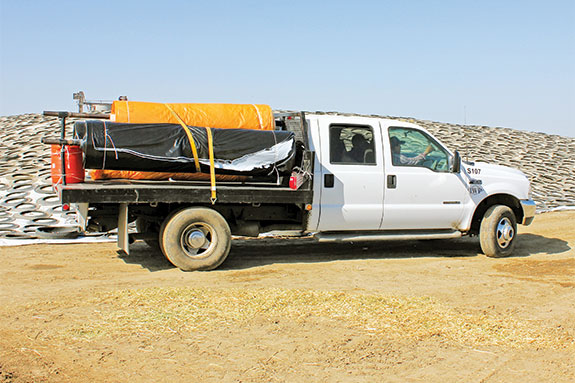
Drive-over silage piles should be sealed immediately after filling is complete. The most effective way to preserve forage is to utilize two layers of protection.
The first layer, an oxygen barrier film, is designed to prevent oxygen penetration, while the second layer, a standard plastic cover, is used to protect the oxygen barrier film from damaging ultraviolet light.
When using a two-step system, the first step is to put the oxygen barrier film directly on the forage. Caution: allow the film to follow the
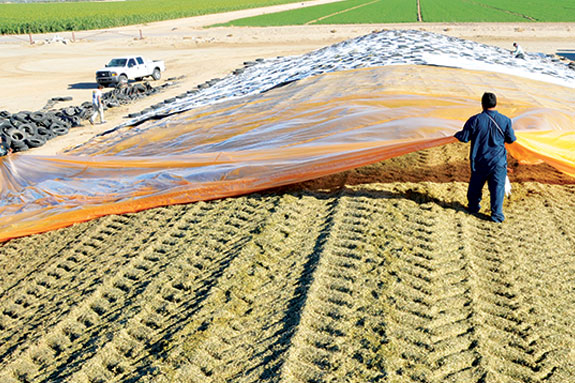
contours of the forage surface and do not pull the film tight.
This step should be immediately followed by putting a standard plastic cover (typically black-on-white) over the oxygen barrier film.
For effective covering:
• Ensure that all surfaces are smooth, so water can drain off properly and doesn’t come in
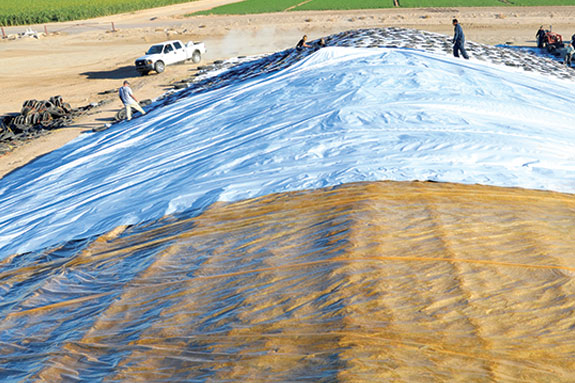
contact with the forage. ( Image 1 )
• Allow at least four to six feet of overlap for all protective sheets. ( Image 2 & 3 )
• Before cutting the film or plastic from the roll, make sure that the sheet is at least four to six feet off the forage surface around the perimeter of the pile. ( Image 4 )
Secure and weight the sheets
Bias-ply truck sidewall disks and sandbags filled with pea gravel are the best options to secure and weight the protective sheets.
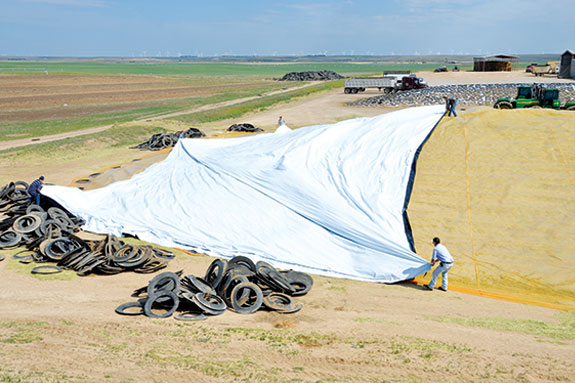
For effective weighting:
• Uniform weight should be placed on the sheets over the entire surface of the pile.
• Double the weight put on the overlapping sheets.
• Secure the overlaps by using a solid row of sandbags or at least two solid rows of sidewall disks.
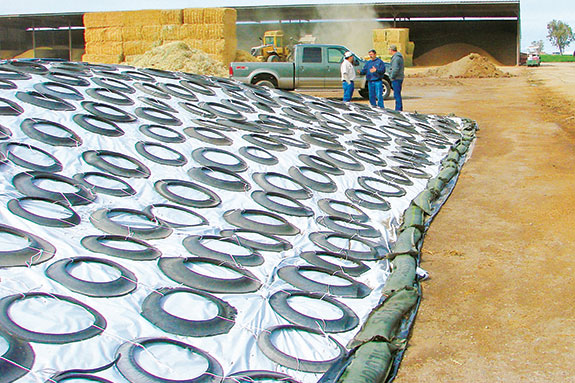 • When using sidewall disks, be sure to cover the entire surface with each disk touching the next. ( Image 5 )
• When using sidewall disks, be sure to cover the entire surface with each disk touching the next. ( Image 5 )
• Sandbags are ideal to anchor sheets around the outside edges of the pile to improve the seal. ( Image 6 )
Feedout
After the forage has been properly covered and sealed, it is important to safely manage the silage feedout face to maintain feed quality.
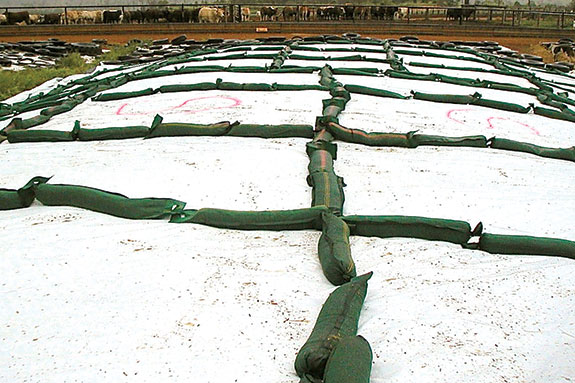
For a safe and efficient feedout:
• Maintain a rapid progression through the silage.
• The face should be perpendicular to the floor of the pile to minimize the square feet of surface that are exposed to air. ( Image 7 )
• At least 6 to 12 inches should be removed daily in colder months and 12 to 18 inches daily in warmer months.
• The leading edge of the covering sheets should remain tightly sealed to minimize
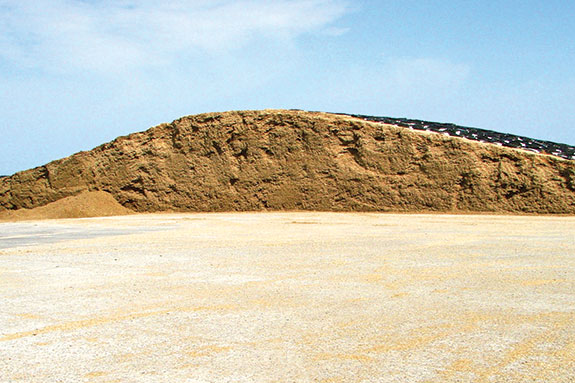
heating and spoilage.
The leading edge should be secured from side-to-side with a solid row of sandbags to prevent air from getting underneath the film and to maintain an oxygen-free environment. ( Image 8 )
• Avoid digging the bucket into the bottom of the feedout face, as this can create an overhang of silage that can collapse at any time without warning.
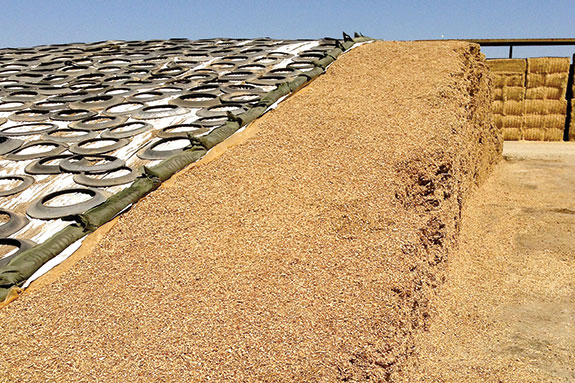 • Never stand near the feedout face. A rule-of-thumb is to never be closer to the face than three times its height.
• Never stand near the feedout face. A rule-of-thumb is to never be closer to the face than three times its height.
• Avalanches cannot be predicted, so play it safe and stay away from the face.
• Follow the “buddy rule” and never work near a feedout face alone.
Regularly inspect and repair the covered surface of piles. Catching a damaged cover early can help minimize spoilage from oxygen exposure.
An annual evaluation of covering and feeding practices can help a dairy extend its silage inventory and feed its cows higher quality forage all year long. EL

-
Shawn Ryan
- Dairy and Feedlot Forage Specialist,
- Silostop North America





